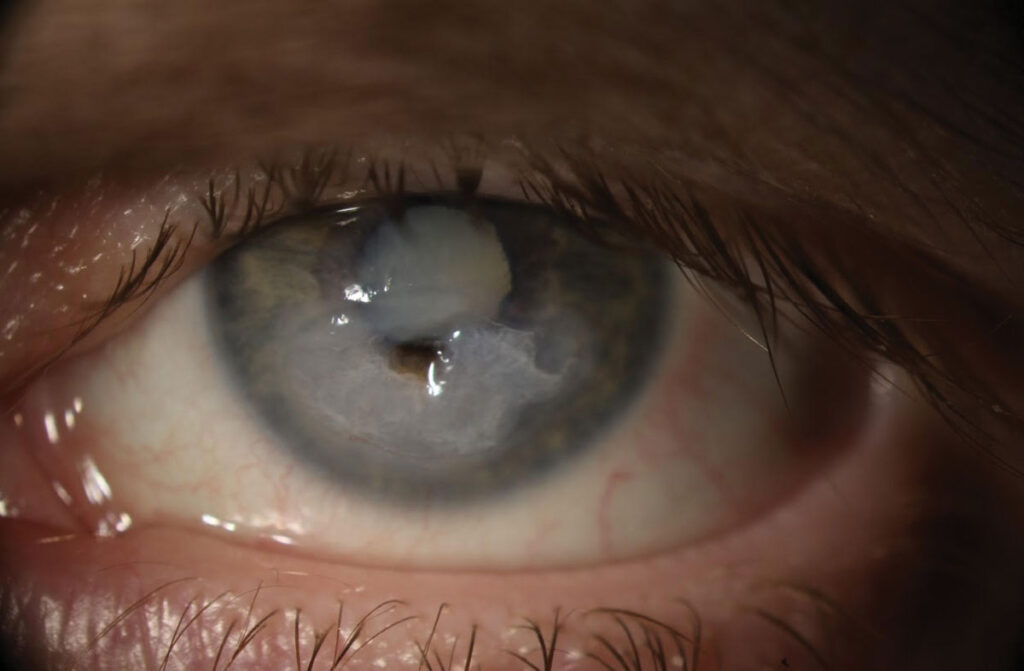Decreased corneal sensitivity, also known as corneal hypoesthesia, refers to a reduction in the cornea’s ability to perceive tactile, thermal, or chemical stimuli. This condition can significantly impact ocular health by impairing protective reflexes, reducing tear production, and increasing the risk of corneal injury. Understanding its causes, associated complications, and available treatments is crucial for early intervention and effective management.

Corneal Sensitivity and Its Importance
The cornea is one of the most densely innervated tissues in the human body, primarily supplied by the ophthalmic division of the trigeminal nerve. This extensive nerve network plays a critical role in:
- Blink Reflex: Protects the eye from foreign objects and environmental irritants.
- Tear Secretion: Stimulates tear production to maintain ocular surface hydration.
- Wound Healing: Facilitates corneal repair after injury.
A reduction in corneal sensitivity can compromise these functions, leading to chronic dryness, delayed wound healing, and an increased risk of infections.
Causes of Decreased Corneal Sensitivity
1. Ocular and Systemic Diseases
Several medical conditions can impair corneal nerve function, including:
- Diabetes Mellitus: Chronic hyperglycemia leads to peripheral neuropathy, which may extend to the corneal nerves, reducing sensitivity.
- Neurotrophic Keratitis: A degenerative condition caused by trigeminal nerve dysfunction, resulting in progressive corneal damage.
- Herpetic Keratitis: Viral infections like herpes simplex or herpes zoster can damage corneal nerves, leading to long-term desensitization.
2. Contact Lens Wear
Long-term contact lens wear, particularly with rigid gas-permeable lenses, can gradually reduce corneal sensitivity due to mechanical stress and hypoxia.
3. Ocular Surgeries
Refractive procedures such as LASIK, PRK, and cataract surgery can sever corneal nerves, causing temporary or permanent reductions in corneal sensitivity.
4. Environmental and Chemical Factors
- Chronic Dry Eye Disease: Reduced tear production leads to corneal nerve dysfunction over time.
- UV Radiation Exposure: Prolonged sun exposure can cause oxidative damage to corneal nerves.
- Chemical Burns: Exposure to harsh chemicals, such as acids or alkalis, can destroy corneal nerve endings.
Symptoms and Clinical Manifestations
Patients with decreased corneal sensitivity may experience:
- Reduced blinking frequency
- Persistent dry eye symptoms
- Delayed wound healing
- Increased risk of corneal infections
- Foreign body sensation in the eye
In severe cases, neurotrophic keratitis can develop, leading to corneal ulceration and vision loss.
Assessment of Corneal Sensitivity
Corneal sensitivity testing is essential for diagnosing hypoesthesia and evaluating disease progression. The most commonly used tool is the Cochet-Bonnet esthesiometer, which measures the cornea’s response to a controlled filament stimulus.
Other diagnostic techniques include:
- Schirmer’s Test: Assesses tear production, which may be affected by corneal nerve damage.
- OCT Imaging: Provides a detailed view of corneal nerve density and structure.
Management and Treatment Options
1. Addressing Underlying Causes
Effective management of decreased corneal sensitivity involves treating the primary condition responsible for nerve damage. For example:
- Diabetic control: Maintaining optimal blood sugar levels can slow the progression of corneal neuropathy.
- Antiviral therapy: Early treatment of herpes simplex or herpes zoster infections can reduce long-term nerve damage.
2. Corneal Nerve Regeneration Therapies
Emerging treatments aim to restore corneal nerve function, including:
- Recombinant Human Nerve Growth Factor (rhNGF): Promotes nerve regeneration in cases of neurotrophic keratitis.
- Platelet-Rich Plasma (PRP) Drops: Stimulates corneal healing and nerve repair.
3. Protective and Supportive Therapies
- Lubricating Eye Drops: Helps maintain ocular surface hydration.
- Punctal Plugs: Reduces tear drainage to improve moisture retention.
- Moisture Chamber Goggles: Protects the eye from excessive dryness and environmental irritants.
4. Surgical Interventions
In severe cases, surgical options such as amniotic membrane transplantation or tarsorrhaphy (partial eyelid closure) may be necessary to protect the cornea from further damage.
MYHEALTHMAG